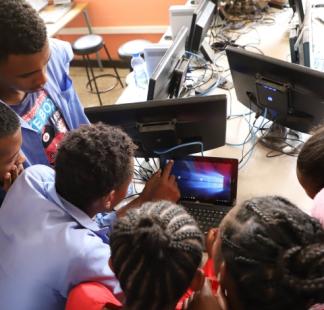- Jonathan Mwakijele
- Emmanuel NIYIKORA
- Annitah Rodah Natwati
Intermediate
- Bank transfer
- Credit card
- M-pesa
Description
The SMTP is designed for individuals within ICT and telecommunications sectors who wish to enhance their knowledge and competence in the area of spectrum management. This includes engineers and managers working in telecommunications regulatory authorities, ICT service providers and other ICT stakeholders. Policy makers in ministries and government departments responsible for ICTs will also benefit from this programme. The course covers the role, functions and basic techniques of spectrum monitoring, and purpose and capabilities of different types of spectrum monitoring equipment.
This course is targeted at engineers and officers tasked with planning, engineering, monitoring and operation of radio systems in developing and leased developed countries. Participants will be drawn from national regulatory authorities, fixed and mobile operators, broadcasters, service providers, government, military, security agencies, Aeronautical, maritime, meteorological, PMR Radio operators, Science and academia.
No prior knowledge or qualification in Spectrum Monitoring is required, however it is important for participants to be working for a regulator, or in the ICT/Telecoms sector as a provider or consultant. Students in the Engineering or ICT related courses could also be considered.
At the end of the course participants will be able to:
Utilize automated spectrum skills for management of radio frequency spectrum.
Post radio frequencies in ntfas and MIFR,
Conduct authorization and licensing using automated SMS4DC tools.
Describe the use of relational database management system and GIS for spectrum management.
List the key elements and functional blocks of an automated spectrum management and monitoring system.
Compare and select a suitable spectrum management and monitoring system based on the needs of administrations.
Implement spectrum management systems in their respective administrations.
This course will be delivered using instructor-led online learning. The course is delivered using power-point slides posted on the course page and selected reference materials that the participants have to study each week, participate in scheduled activities and undertake self-assessments. Students will reinforce their understanding of the topics studied by drawing on their specific environments and are encouraged to consult with experienced colleagues who are working on a relevant topic. The following methods will be used for this course
Self-study of PPTs and reference materials
Instructor led presentations and discussions through ZOOM on Monday and Wednesday from 1800 Hours to 2000 Hours EAT (GMT+3)
Forum discussions through the ITU Academy portal
The evaluation is based on:
Participation in all the four Forums (10%)
Quiz week 1 (10%)
Quiz week 2 (10%)
Quiz week 3 (10%)
Quiz week 4 (10%)
End of course assignment (50%)
Purpose and Role of monitoring in the spectrum management process
ITU’s role and structure, with focus on ITU-R, Study Group SG1 and its Working Party 1C in particular
Radio Regulations, with focus on various articles related to monitoring
Typical measurements conducted by monitoring, such as:
- Occupancy measurements
- Bandwidth measurements
- Field strength measurements
- Modulation measurements
- Frequency measurements
ITU-R Recommendations and Reports related to monitoring
Principles of various types of monitoring equipment (manuals):
Antennas
Receivers
Direction finders
Spectrum analysers












